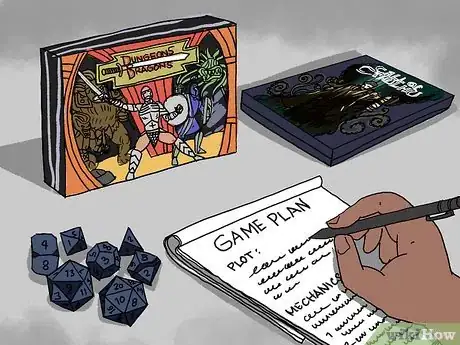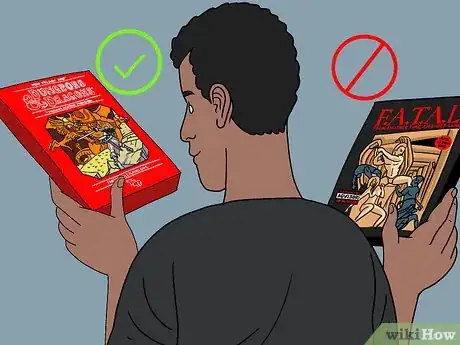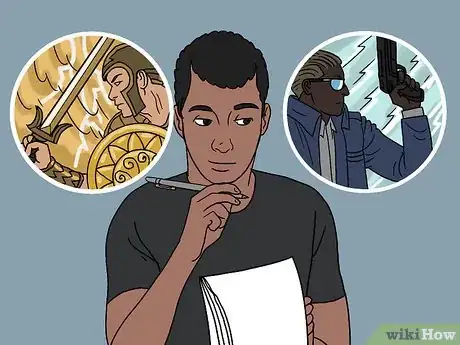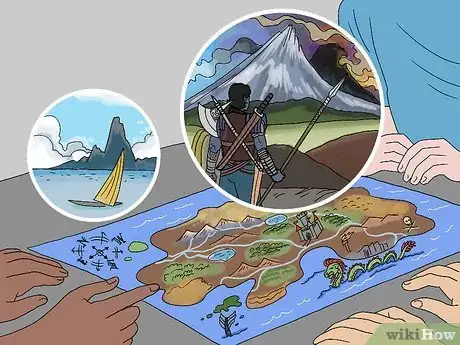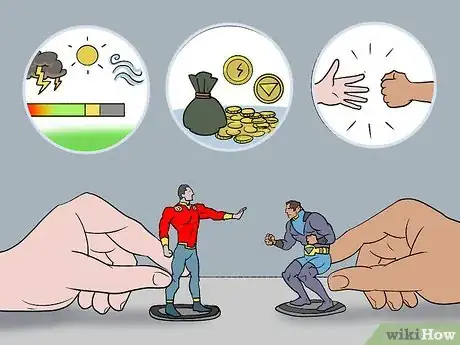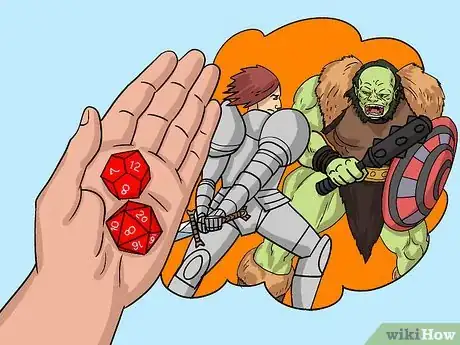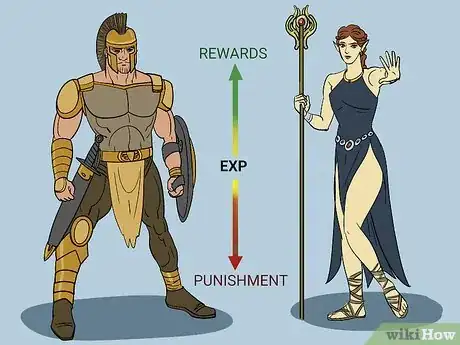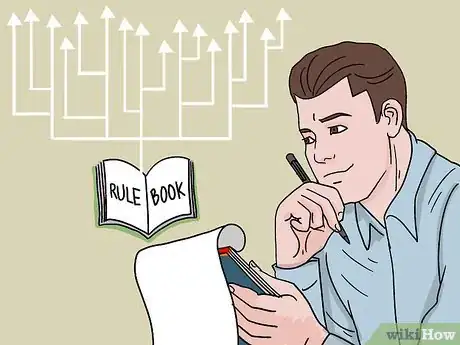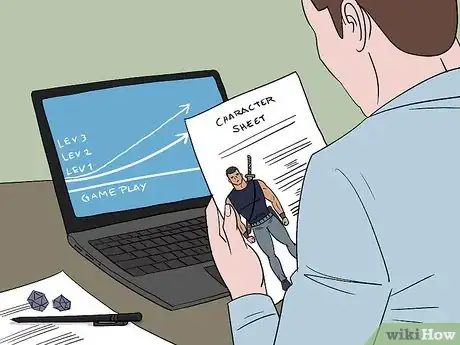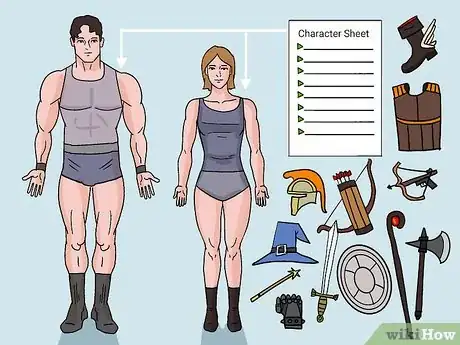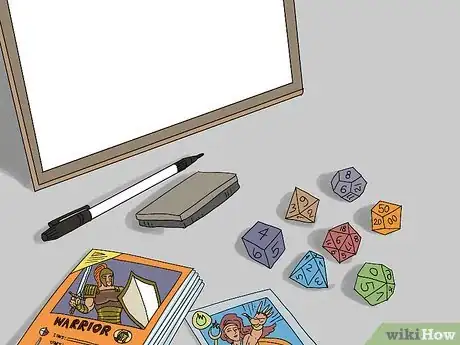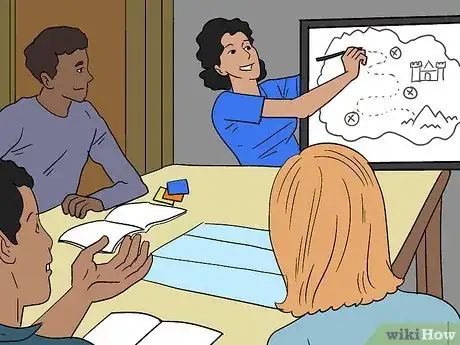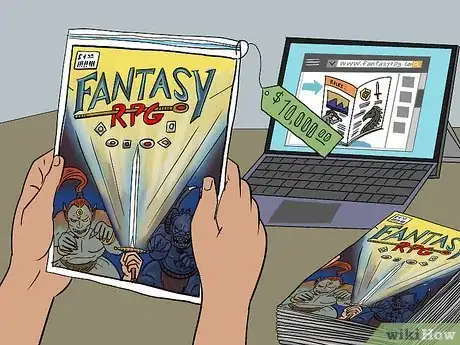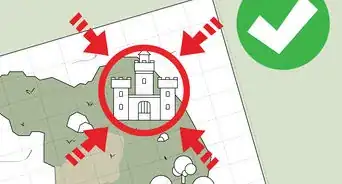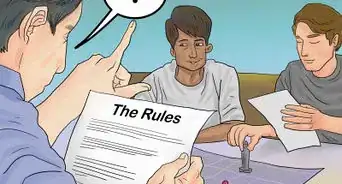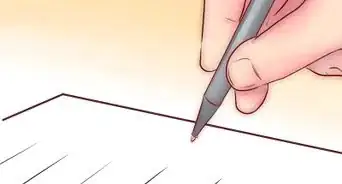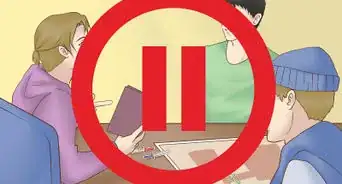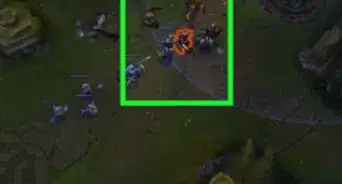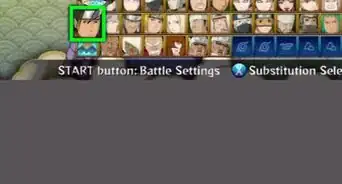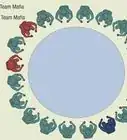This article was co-authored by wikiHow staff writer, Janice Tieperman. Janice is a professional and creative writer who has worked at wikiHow since 2019. With both a B.A. and M.A. in English from East Stroudsburg University, she has a passion for writing a wide variety of content for anyone and everyone. In her free time, you can find her working on a new crochet pattern, listening to true crime podcasts, or tackling a new creative writing project.
There are 13 references cited in this article, which can be found at the bottom of the page.
This article has been viewed 24,503 times.
Learn more...
Want to design your own tabletop roleplaying game (RPG)? Making your own tabletop RPG is a great way to show off your creativity in an imaginative way. This wikiHow will guide you through planning your game, choosing effective mechanics, implementing rules and systems, and most importantly, making your game fun for players.
Steps
How do I make my own tabletop RPG?
-
1Develop a basic game plan, or “compass,” for your RPG. Unlike traditional board games, like chess or checkers, RPGs revolve around a specific premise or plotline. When designing your own tabletop RPG game, first outline what the game is about, and what you’d like players to experience. Then, iron out the RPG’s game mechanics, or how the game will be played—this might be done with traditional tabletop dice, a special deck of cards, or something else entirely. To tie it all together, create a reward/punishment system that motivates players throughout the story/campaign.[1]
- Your game’s premise doesn’t have to be complicated! In Dungeons and Dragons, the basic plot is fighting monsters and picking up loot or treasure.
-
2Study both successful and unsuccessful RPGs. Look to some of the classics, like Dungeons and Dragons and Call of Cthulhu—both of these games have at least 5 editions, are well-loved by many tabletop players.[2] On the other hand, take a closer look at tabletop RPGs that crashed and burned, like FATAL or HYBRID. Many unsuccessful games have confusing rules and premises, and are great case studies for what not to do when designing your own game.[3]
How do I come up with a good premise for my game?
-
1Choose which genre your RPG will fall under. Tabletop RPGs span a wide variety of genres. While Dungeons and Dragons is the most well-known tabletop RPG out there, your game doesn’t have to fall into the high fantasy genre. You might branch into a gothic, crime-style RPG, like Blades in the Dark, or create your own take on the western genre, like Deadlands. Pick a genre that really appeals you, and work your way up from there.[4]
-
2Brainstorm your potential player base. Think about how many people you’d like to play your RPG. Do you want your game to focus more on individuals, or give your characters plenty of chances to interact? Narrowing down your player base can help you fine-tune your RPG.[5]
How do I make the game engaging?
-
1Outline a basic plot and goal for the RPG. Pick out a main goal for your players—what are they trying to achieve during the game campaign, and what will they have to face along the way? Develop different battles and enemies to challenge players along their journey.[6]
- For example, in the RPG Paranoia, you try not to be killed by other players.
- The main goal can be internal, too! In the game Nicotine Girls, the characters are trying to get out of a boring town.
-
2Pick out an interesting setting for your game. Design a map of your new universe, outlining any important locations your players might run into along the way. You can also make the map more customizable, and let individual groups of players decide the setting of their campaign.[7]
- For instance, a high fantasy RPG would need a detailed map of the fictional land or kingdom.
- Realistic settings are also great choices! Call of Cthulhu, Vampire: The Masquerade, and Shadowrun are popular RPGs with realistic settings.
How do I choose effective game mechanics?
-
1Choose a game system that you’re familiar and comfortable with. Game systems, like rolling dice, help you and your players get from point A to point B within the RPG. Feel free to lean on the systems of tried and true games, and adapt some of those concepts and guidelines to your own game.[8]
- For instance, you might reference Dungeons and Dragons and create a “check” system in your RPG. “Checks” involve rolling dice to see what your character’s stats are.
- You don’t have to use dice as your game mechanics! Dragonlance: Fifth Age uses a special set of cards, while Dread uses a tower of wooden blocks.[9]
-
2Develop a leveling and class system for your game. Many tabletop RPGs categorize their characters into different classes, which give them different abilities. Choose character classes that mesh well with your games universe, so potential players have more options to choose from. Additionally, decide how your characters will level up—they might collect EXP over time, or level up after each battle/challenge.[10]
- In Dungeons and Dragons, some character classes are paladin, rogue, monk, and cleric.
How can I make the game run smoothly?
-
1Create mechanics that blend seamlessly with the RPG’s premise. Mechanics help make your RPG really immersive and actionable for the players. These mechanics might be an weapon management feature or a fluctuating health bar, depending on what the premise of your game is.[11]
- If you’re designing a survival-based RPG, you might give players a health bar that shifts depending on the current weather conditions.
- You might create a bidding or betting system in your game where players wager their currency.
- You could have players do a round of rock-paper-scissors to compete for resources.
-
2Resolve conflict with resolution mechanics. Conflict resolution systems help players navigate through different plot points in the game. A conflict-resolution system might involve establishing a goal at the beginning of a new event, or rolling certain dice to decide how a conflict unfolds.[12]
- For example, you could let players earn dice throughout the RPG, and let them “duel,” or roll their dice, as a final conflict at the end of the game.
How do I write effective rules for my game?
-
1Create a rule system that’s unique to your RPG. Rules help give your game structure, and let players know what they can and cannot do. If you’re creating a rules-medium or rules-heavy game, outline plenty of details about how gameplay will go.[15]
- For instance, you might create a system where players can say and do whatever they’d like unless another player vetoes them.
- You might make a rule that players can only do 2 total actions on their turn.
-
2Discuss all possible situations in your rulebook. Brainstorm every possible scenario that could happen in your RPG, even if it seems unlikely. Unfinished or incomplete rules can be tricky to work with, and may leave players feeling confused and frustrated. It may be time-consuming, but thorough, intricate rules can really take your tabletop RPG to the next level![16]
How do I make the game fun for the players?
-
1Balance the game’s skill level. Don’t make your enemies and challenges too overpowered—if your players can’t win a simple battle, they may feel discouraged or frustrated with the gameplay. Instead, scale the challenges with the experience levels of the characters.[17]
- For instance, if your players are all level 1, you wouldn’t have them face off a level 20 enemy in the first battle.
- On a similar note, don’t make the RPG challenges too easy! A chance of risk and failure can make the game a lot more tantalizing.
-
2Let your players design and build their own characters. Provide a character sheet for your players where they can jot down their character’s bio, stats, weapons, current health, skills, and any other important information. Try not to pigeon-hole your players into certain tropes or characters—instead, give them plenty of creative freedom to really make the character their own.[18]
- Dungeons and Dragons character sheets are great references if you’re designing your own tabletop RPG.
-
3Give your players enough freedom. Ultimately, a tabletop RPG is a big balancing act. Look for a happy medium between your game mechanics and the players themselves. While dice rolls add a fun, unpredictable element to your game mechanics, give your players plenty of freedom to make their own decisions.[19]
- For instance, you might have players roll a d20 to see how much damage their weapon does. Once they roll a specific number, the player makes a decision and contributes to their story narrative on their own terms.
What supplies will I need for my tabletop RPG?
-
1You may need a special set of dice. Many tabletop RPGs use a multi-faceted set of dice to keep the game going. These dice are abbreviated with the letter “D” and the number of sides on the die.[20] Many RPGs use a set of 7 dice: a d4, d6, d8, d10, d10 in 10’s (ten-sided percentile), d12, and d20, but it really depends on your personal preference.[21]
- A cheap set of dice can cost less than $15, while high-quality or customized dice tend to be pricier.
- The supplies you’ll need ultimately depends on your game’s mechanics. If your game is dice-based, bring a set of your favorite dice. If your game uses wooden blocks, cards, or another type of mechanic, bring those instead![22]
-
2Bring a whiteboard for extra reference. Tabletop RPGs are fueled solely by your imagination—but simple visuals can still help clarify the gameplay! Grab a small whiteboard, along with a dry-erase marker. Draw out the setting or location on the whiteboard as you play, so players have a good idea of where their characters are in the game.[23]
Community Q&A
-
QuestionCan you possibly market an rpg cheap, by yourself?
 Josiah HortonCommunity AnswerA good tool for free marketing, like it or not, is TikTok. The TikTok algorithm basically ensures that your video will be pushed to at least 10 people. Posting regularly will get your videos in front of more people and you will have an established niche. If you want to get people interested, create some videos of gameplay. The D&D and Tabletop RPG niche is quite large and active, so if you create videos of ridiculous moments in your RPG it will likely resonate with some people there. TikTok has some great tools to interact with viewers and answer questions, so if someone expresses interest in your game you can inform them of where to get a hold of the guide.
Josiah HortonCommunity AnswerA good tool for free marketing, like it or not, is TikTok. The TikTok algorithm basically ensures that your video will be pushed to at least 10 people. Posting regularly will get your videos in front of more people and you will have an established niche. If you want to get people interested, create some videos of gameplay. The D&D and Tabletop RPG niche is quite large and active, so if you create videos of ridiculous moments in your RPG it will likely resonate with some people there. TikTok has some great tools to interact with viewers and answer questions, so if someone expresses interest in your game you can inform them of where to get a hold of the guide.
References
- ↑ https://medium.com/a-taste-of-madness/level-zero-how-to-start-designing-your-first-tabletop-role-playing-game-c70820702041
- ↑ https://www.dicebreaker.com/categories/roleplaying-game/best-games/best-tabletop-roleplaying-games
- ↑ https://tvtropes.org/pmwiki/pmwiki.php/Horrible/TabletopGames
- ↑ https://tvtropes.org/pmwiki/pmwiki.php/SoYouWantTo/WriteATabletopRPG
- ↑ https://tvtropes.org/pmwiki/pmwiki.php/SoYouWantTo/WriteATabletopRPG
- ↑ https://tvtropes.org/pmwiki/pmwiki.php/SoYouWantTo/WriteATabletopRPG
- ↑ https://tvtropes.org/pmwiki/pmwiki.php/SoYouWantTo/WriteATabletopRPG
- ↑ https://worldbuilderblog.me/2020/04/16/getting-started-in-tabletop-roleplaying-game-design/
- ↑ https://geekandsundry.com/5-more-rpgs-that-dont-use-dice/
- ↑ https://tvtropes.org/pmwiki/pmwiki.php/SoYouWantTo/WriteATabletopRPG
- ↑ https://medium.com/a-taste-of-madness/level-zero-how-to-start-designing-your-first-tabletop-role-playing-game-c70820702041
- ↑ https://medium.com/a-taste-of-madness/level-zero-how-to-start-designing-your-first-tabletop-role-playing-game-c70820702041
- ↑ https://medium.com/a-taste-of-madness/level-zero-how-to-start-designing-your-first-tabletop-role-playing-game-c70820702041
- ↑ https://tvtropes.org/pmwiki/pmwiki.php/SoYouWantTo/WriteATabletopRPG
- ↑ https://tvtropes.org/pmwiki/pmwiki.php/SoYouWantTo/WriteATabletopRPG
- ↑ https://mythcreants.com/blog/seven-design-mistakes-roleplaying-games-keep-making/
- ↑ https://tvtropes.org/pmwiki/pmwiki.php/SoYouWantTo/WriteATabletopRPG
- ↑ https://www.matthewperkins.net/blog/2018/5/22/ar6vvms5itf8yr31eni5plvfd9st51
- ↑ https://www.gamasutra.com/blogs/ArtoKoistinen/20190313/338522/Four_Axes_of_RPG_Design.php
- ↑ https://screenrant.com/best-tabletop-rpg-system-make-your-own-game/
- ↑ https://geekdad.com/2018/02/build-perfect-roleplaying-dice-set-just-many-dice-need/
- ↑ https://geekandsundry.com/5-more-rpgs-that-dont-use-dice/
- ↑ https://geekandsundry.com/tabletop-rpg-essential-tools-for-your-first-session/
- ↑ https://medium.com/tdebenetti-on-crowdfunding/the-price-of-self-publishing-your-own-tabletop-rpg-164d181f1473
- ↑ https://worldbuilderblog.me/2020/04/16/getting-started-in-tabletop-roleplaying-game-design/
